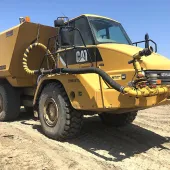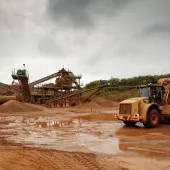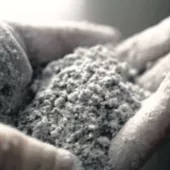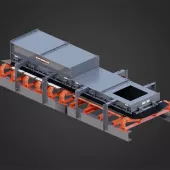Dust-management Challenge
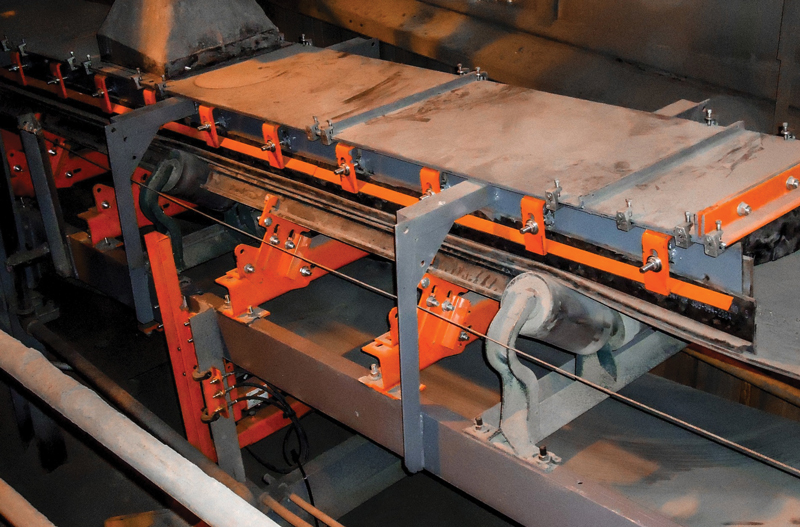
First published in the December 2015 issue of Quarry Management
US cement manufacturer takes control of airborne dust and fugitive material
Grupo Cementos de Chihuahua (GCC), a global producer of cement, ready-mixed concrete, aggregates and related products to the construction industries in Mexico, the US and Bolivia, have completed a significant upgrade to their bulk material handling conveyors, helping the company eliminate waste and reduce maintenance, while minimizing potential risks from airborne dust and fugitive material build-up. By avoiding accumulations that required clean-up, the company is also reducing the need for maintenance personnel to work in close proximity to fast-moving conveyors, helping to further diminish the chance of accident or injury.
Like most cement manufacturing sites, GCC’s Dakotah plant employs an extensive conveyor system to handle raw materials and move finished product. In keeping with the company’s desire to employ industry best practice for bulk handling and fugitive material control in its plants, GCC officials conducted an extensive assessment of the conveyors in early 2013. Having determined that significant upgrades could be made to conveyor transfer points to reduce spillage and dust emissions, they contacted Martin Engineering for a proposal.
‘Virtually any time bulk material is moved, especially in large quantities or at high speeds, the potential exists to create and release dust,’ explained Martin Engineering product engineer Dan Marshall. ‘Dust accumulation affects both safety and productivity, so it’s really more than just a housekeeping issue. Complicating the situation is the fact that bulk-handling systems frequently must accommodate changing weather and material conditions, making dust management an even bigger challenge.’
Scope
The upgrade involved a significant overhaul of six transfer points on four conveyors, which were originally constructed in the late 1970s. All the belts are 24in (61cm) wide and range in length from 40ft (12.2m) to 110ft (33.5m). During normal operation, they transport 200–250 tonnes/h of clinker from the storage building to the feed bins for the finish mills.
‘Most of the material-handling system at this plant was fairly standard issue for its time, but some of the components were nearing the end of their useful life,’ commented GCC maintenance manager Ralph Denoski. ‘We were also aware that significant advancements had been made in some areas of bulk handling, and we wanted to take advantage of the newest technologies.’
Having received a detailed proposal from Martin Engineering, GCC planned the upgrade process for a scheduled shutdown in March. In addition to supplying the components, Martin Engineering were responsible for planning and supervision of the project, while a mechanical contracting group assisted with the installation.
Components
Work began on all four conveyors by disconnecting the material inlet chutes from the existing skirtboard system and removing the worn rubber skirt seals, clamps, supports, skirtboard chute walls and tail boxes. Existing idlers were also removed to allow mounting of new belt-support systems and troughing roll assemblies.
On each conveyor, three Martin Trac-Mount idlers were installed, spaced to deliver optimum belt support. The special idler design delivers proper belt carriage, while stabilizing the belt line to improve sealing. Its slim profile requires only 8in (203mm) of space for 6in (152mm) idlers, and the slide-in/slide-out frames allow service without the need to raise the belt or remove adjacent idlers.
With new idlers and troughing roll assemblies in place, each transfer point received one new impact cradle and two belt-support cradles. Installed under the loading zone, Martin impact cradles absorb the force of falling material in a transfer point and stabilize the belt line to help prevent the escape of dust and fines. Rugged impact bars consist of a top layer of low-friction, ultra-high molecular weight (UHMW) polymer and a lower layer of energy-absorbing styrene butadiene rubber (SBR).
Working in conjunction with the impact cradles are a pair of Martin slider cradles on each conveyor. Installed under the skirtboard of the transfer point, these cradles support the edges of the belt specifically to eliminate sagging. With the proper support in place, pinch points that can trap material and gouge the belts are eliminated, improving both sealing efficiency and belt life. When the top eventually wears out, the bars can simply be flipped over to provide a second wear surface.
Sixteen-feet-long sections of skirtboard were installed on each transfer point, with new side/center supports and covers. The new skirtboard is 7in (17.8cm) high on two of the conveyors, and 12in (30.5cm) high on the other two. Each system also included internal skirtboard wear liners and a new tail-box assembly with sealing components.
To deliver positive containment of fugitive dust, each transfer point was fitted with Martin ApronSeal skirting, a dual design with two sealing surfaces. A primary seal is clamped to the steel skirtboard to keep lumps on the belt, and a secondary seal or ‘outrigger’ strip captures any fines or dust particles that may pass beneath the primary seal. The secondary seal lies gently on the belt and self-adjusts to maintain consistent strip-to-belt pressure, despite high-speed material movement and fluctuations in the belt’s line of travel.
Each conveyor was then fitted with a Martin Tracker for the return side, installed approximately 10ft (3m) ahead of the tail pulley. By providing immediate and continuous precision adjustment of the belts, the Tracker helps reduce edge damage, prevent spillage and extend belt life.
Finally, each belt received one Martin QC1 primary cleaner and one Martin SQC2S secondary cleaner. The QC1 features a special polyurethane blend and tungsten carbide tip to deliver service life two to three times longer than conventional urethane blades. Designed to provide excellent cleaning performance from the off, without any break-in period, the assembly maintains consistent tension without frequent adjustment.
Results
The entire upgrade operation was completed in just 11 days during the scheduled outage, with crews working 12h a day to accommodate the planned shutdown. While specific cost savings are difficult to quantify, Ralph Denoski said the difference is easily observed. ‘The production team responsible for that area has had nothing but positive feedback about the upgrades,’ he commented. ‘We’re not losing product to spillage and dust, so that material can be sold instead of cleaned up off the floor. The manpower formerly spent on clean-up can now be directed to core business activities.
‘Our experience with Martin Engineering has been very positive,’ he concluded. ‘The company’s greatest strengths are its knowledge of bulk material handling problems and the best solutions for addressing them. And their no-excuses guarantee gives us the confidence of knowing that they will stand behind their products.’
For more information visit: www.martin-eng.com
- Subscribe to Quarry Management, the monthly journal for the mineral products industry, to read articles before they appear on Agg-Net.com


